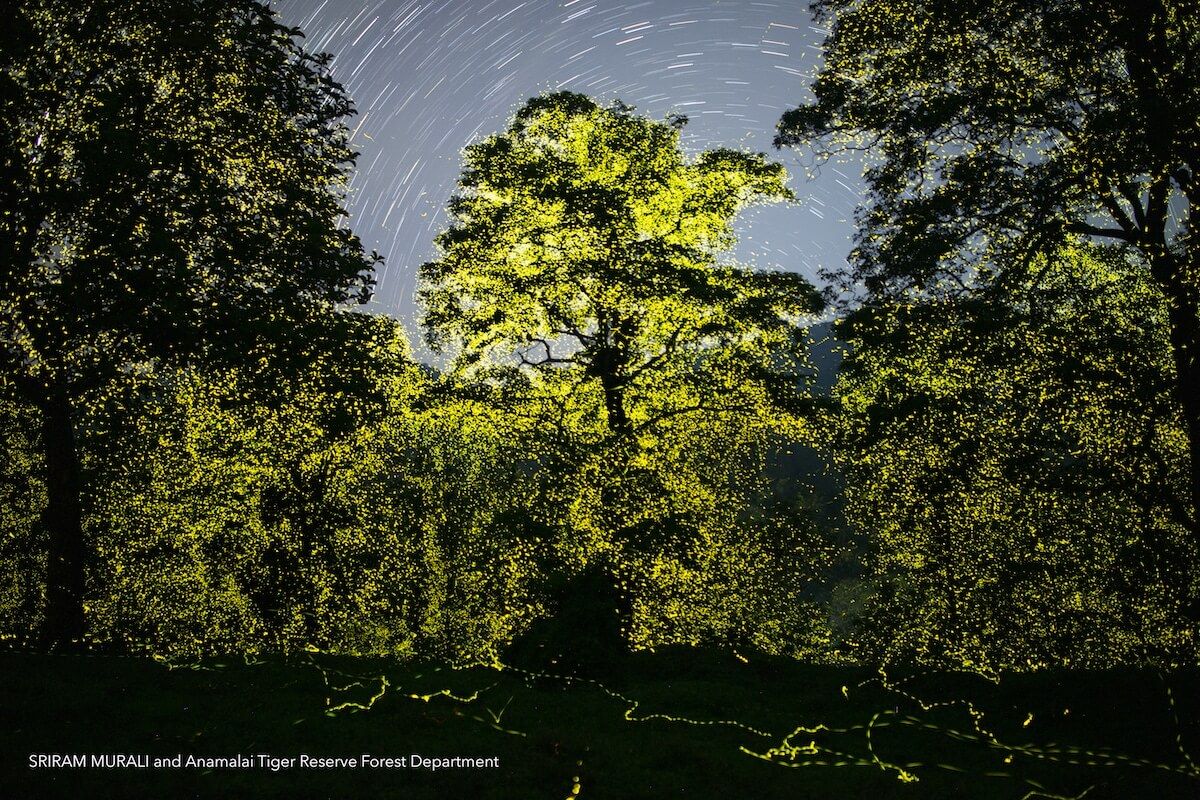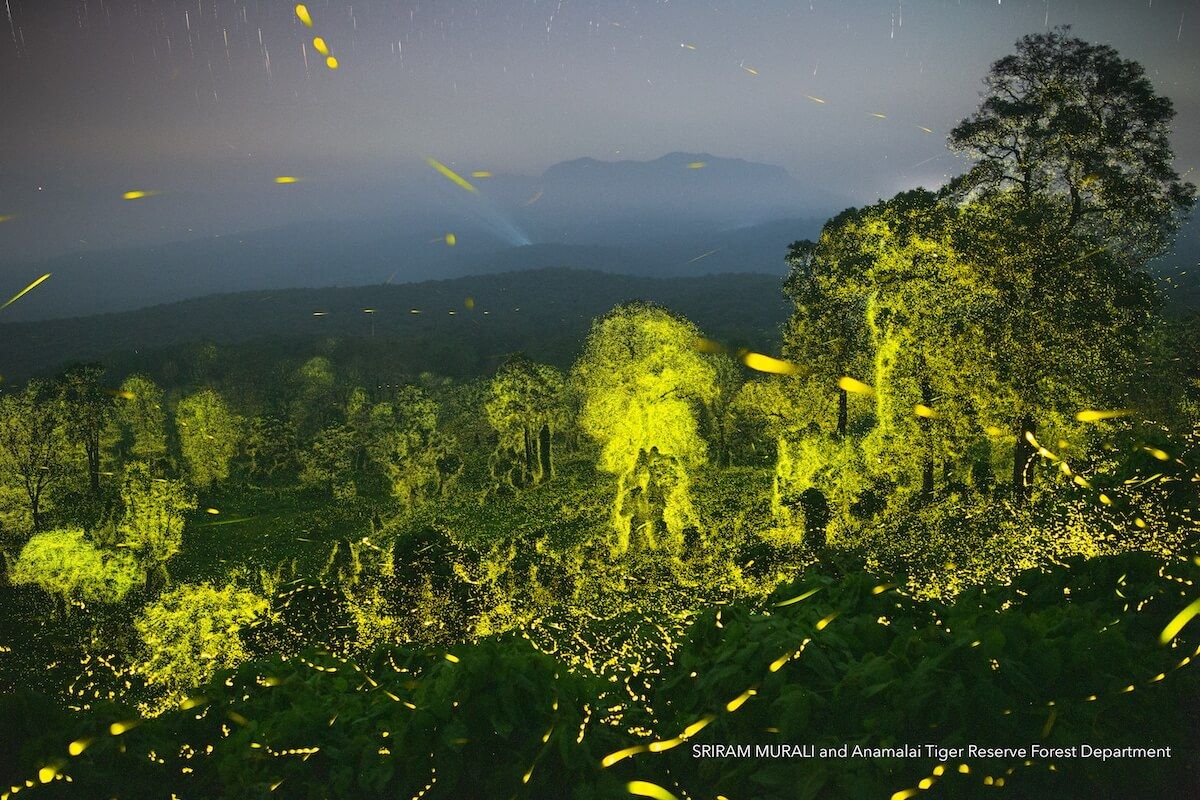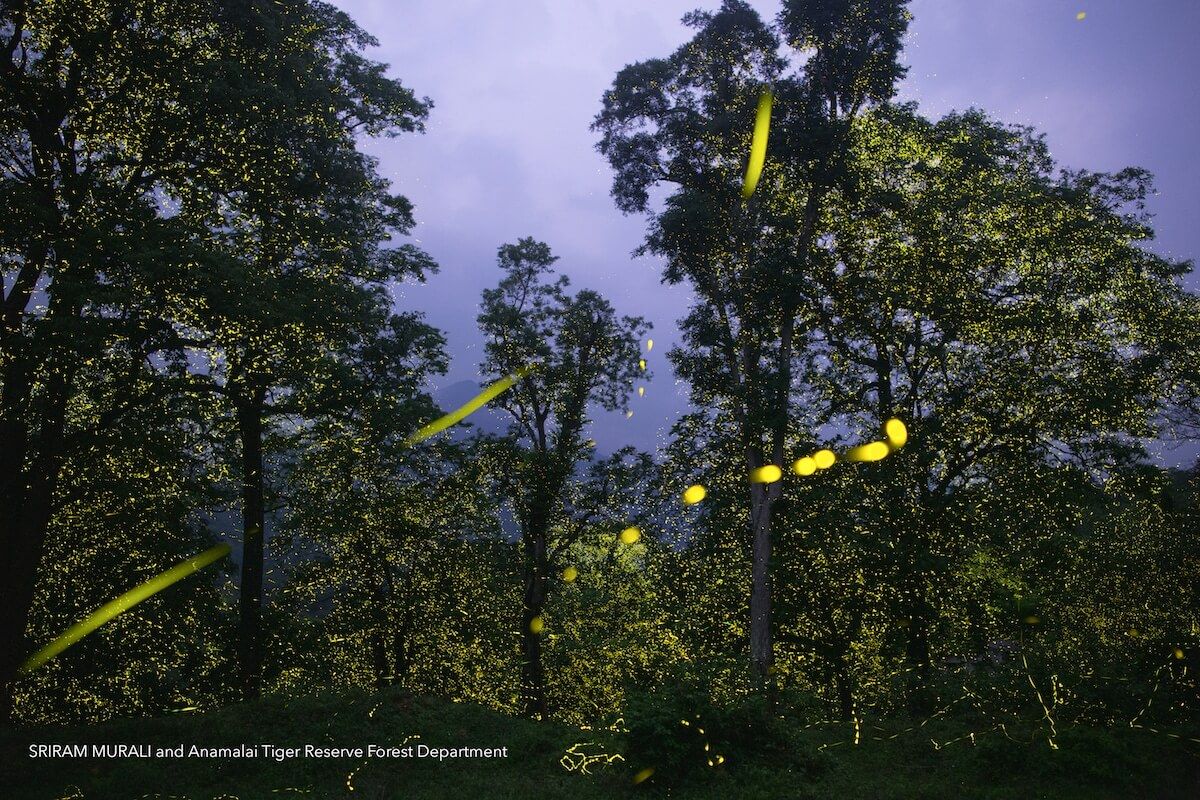
Many people who grew up outside of urban centers have fond memories connected to fireflies. Seeing these magical insects light up backyards is a sign of summer and conjures up nostalgic childhood moments. But, have you ever seen billions of fireflies put on a light show so brilliant that they light up an entire forest at the same time? Luckily, Sriram Murali has—and he documented everything for the world to see.
Murali, who works for Google, has spent the last 10 years working to raise awareness about light pollution in his spare time. And for the past few years, he’s turned his attention to fireflies. These incredible insects aren’t actually flies, but are rather beetles that can take flight. All of the 2,000 species of fireflies have light-producing organs that emit light that is 100% efficient. This bioluminescence helps with mating, as it attracts females of the same species.

In very rare instances, fireflies can flash in synchronicity. This only happens in certain species and only if there is the right density of fireflies. So when Murali found a 2012 study stating that this synchronized flashing occurs at the Anamalai Tiger Reserve (ATR) in Tiruppur District, Tamil Nadu, India, he knew he needed to see it for himself. After contacting the reserve, Murali and ATR Deputy Director M.G. Ganesan began researching the ecology and conservation of these fireflies.
Murali, who is a skilled photographer, filmmaker, and storyteller, recalls the special feeling of seeing the fireflies for the first time. “It was as if I walked into a dreamland,” he tells My Modern Met. “I often wonder how life would be on other planets elsewhere in the universe and I felt this phenomenon gave me a glimpse of that. It’s fascinating that such a tiny insect coordinates so well and puts on a grand show.”
Through still photography and a short film, Murali brings us into this magical world. It’s incredible to see these small living creatures taking over the space—a space that is dominated by elephants and tigers during the day. But at night, it’s their domain. And Murali points out that the fact that these fireflies are able to thrive in this environment is a wonderful testament to the conservation work that ATR has done.

Fireflies, which spend most of their life as larvae, are critical to maintaining a balanced ecosystem. This is because larvae feed on soft-bodied insects like snails, slugs, and earthworms in large quantities. Unfortunately, fireflies are in decline around the world due to habitat loss, artificial light, and pesticide usage.
So what is Murali’s best advice for keeping them safe? “To help firefly populations in rural areas and cities, it is important to reduce artificial lighting, and use only what’s needed, when it is needed. This also helps the birds and many other nocturnal species. Maintaining a backyard garden invites insects that the fireflies feed on. We can all play our small part in bringing back the firefly magic everywhere.”





